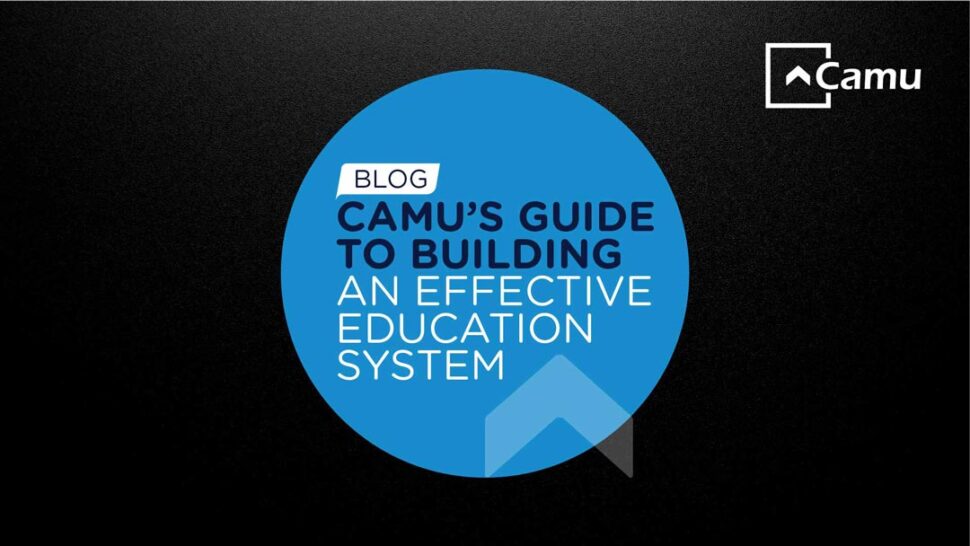
Camu’s Guide to Building an Effective Education System
An education system – primary, secondary or higher – should be conceived as a dynamic process.
One that is led by the tenets of flexibility, agility, innovation, personalisation, and student-centricity.
One that is quick to respond to learning trends and insights.
One is that is inclusive of all stakeholder needs.
As you must know, National Education Policy (NEP) 2020 has laid out a path for a new educational landscape, pedagogical structure and curriculum.
The EdTech industry is booming as all educational institutions, big and small, are embracing a hybrid approach to learning.
But what are the secret ingredients to building an effective education system?
Camu has simplified this answer for you!
1. Infrastructure Development
An education system is only as good as the ecosystem that supports it. Of course, one can argue that any place is good, so long as you are willing to learn. But the fact is, when your environment is conducive, you have the motivation and desire to be productive. It is therefore essential to design educational infrastructure in such a way, so as to maximise the efficiency and effectiveness of the education being imparted. This is one of the most basic elements needed to ensure access to quality education. Apart from creating the right atmosphere for students, teachers also need an ideal space to co-create knowledge. Classrooms, laboratories, libraries, sporting fields, home rooms, canteens, etc. Infrastructure is the foundation of an education system.
2. Technology Integration
Prior to the pandemic, technology adoption was an option. While rapidly growing, it was still regarded as a complimentary function. Today, it is a mandate. An enabler of learning. As soon as Covid-19 hit, governments across the world announced complete lockdowns. This meant, an acceleration for the need to shift from a brick-and-mortar model to a digital form of education. After all, necessity is the mother of all inventions! And investing in an appropriate EdTech platform that supports a suitable Learning Management System became a crucial step in curating a sound education system. The evolution from a traditional classroom, to a virtual and blended classroom, is paramount in building an effective education system.
3. Process Consolidation
A very important pillar that holds the entire education system together, is operational efficiency. There is a lot of evidence to suggest that institutional success is directly linked to this area of expertise. Which leads us to surmise that it’s imperative for education leaders to nurture and grow their back-office operations as much as their front-office operations. The two are intertwined and there’s much opportunity for efficiencies to be met across the board. Departments, functions, tasks and activities need to align to create true synergy. Additionally, administration must support academics, and vice versa. Partnering with the right technology vendor and campus management solution is key to mastering this stage.
4. Teacher Training
Developing faculty skills is now more necessary than ever, as modes of teaching continue to expand, new technology is introduced, and student expectations evolve (in the wake of the pandemic). Focusing on learner outcomes/objectives is extremely vital, but can an education system be truly meritorious unless those delivering the education are fully equipped themselves?! A well-known quote in the education circle reiterates that while technology cannot replace a teacher, a teacher who uses technology will replace the one who does not. Prioritising and optimising the development of teachers will benefit the ecosystem at large: institutions, students and the economy. Aspects such as digital literacy skills, specialised subject knowledge, and curriculum IQ need to be aided.
5. Stakeholder Collaboration
An education system is made up of multiple stakeholders. Students, teachers, administrators, management, parents, communities, the government, and more. Understanding each one’s requirements and then finding a way to balance them out through actionable goals, is the way to building a strong and enduring culture. A flat hierarchy helps to foster stakeholder collaboration through an open, two-way communication channel. Speaking of which, the EdTech platform in question needs to support connectivity in real time. Only when stakeholders come together to work towards a common cause, can there be a real chance for institutional success. And this depends upon the leadership style being followed.
6. External Networking
Forging valuable partnerships with universities, research centres, NGOs, and companies, gives an institution the advantage it needs to help students on their academic and corporate journeys. Not only does this enhance learner experiences, but it also enriches academic practices, increases accreditation prospects, and improves enrolment rates. A holistic and well-balanced education system is one that encourages fruitful relationships with external partners and taps into its valuable network when required.
For more insights and information into what comprises a superior quality education system, go over Camu’s blogs and case studies.
Our website is a treasure trove of academic knowledge!







